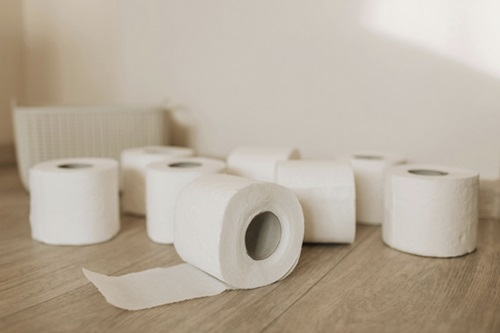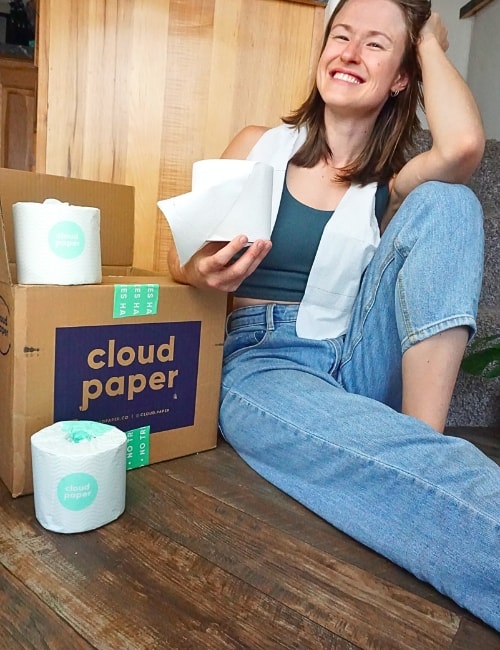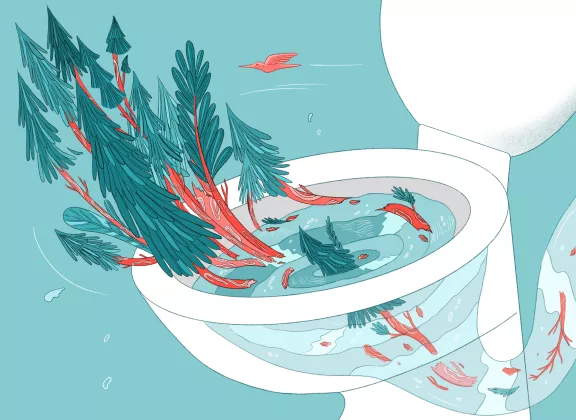Toilet Paper Choices: Which Is The Greenest?
Taylor Connelly March 28, 2024

The toilet paper you choose may just say a lot about your commitment to saving the planet… Credit: Pexels.com.
Dear EarthTalk: Which are the greenest toilet paper varieties? —Sam Atkins, Poughkeepsie, NY

When thinking of ways to live a greener lifestyle, toilet paper isn’t usually te first thing people think of, but the average American uses more than 50 pounds of tissue paper per year. Like other paper products, toilet paper is typically made from trees. As consumer demand grows, trees continue to be cut down at alarming rates. Between 1996 and 2015, loggers cut down around 28 million acres of woodland, an area roughly the size of the state of Ohio. Finding alternatives, or ways to cut down on paper use, is a great way to limit your impact on the environment.

As new companies emerge and come out with new toilet paper options, the Natural Resources Defense Council (NRDC) has come up with a system to grade how sustainable certain toilet and tissue paper brands are. The grades rank from A+ to F and account for a variety of factors like the percentage of recycled material used in the toilet paper. A grade of A+ means that the toilet paper was made entirely of recycled materials, used a chlorine-free bleaching process, and had the highest percentage of post-consumer recycled paper. Post-consumer recycled means that the recycled materials came from products that had reached the end of their life cycle and would have otherwise ended up in landfills. When going green it’s also smart to look for “processed chlorine free” papers over bleached and “elemental chlorine free” papers, because the latter can emit cancer causing dioxins into the air and water when they are processed. Toilet paper brands that were awarded an A+ grade by the NRDC include 365 by Whole Foods Market, Green Forest, Natural Value and Trader Joe’s.
A grade of A means that the paper brands contain 100% recycled material, but a lower percentage of post-consumer recycled paper. Some good A rated toilet papers include Seventh Generation Extra Soft & Strong, Who Gives a Crap, and Everspring. The B and B+ grade is typically reserved for the emerging market of bamboo-based paper brands. While bamboo is less environmentally friendly than recycled material, it is still greener than using pure forest fibers. The other catch is that the largest bamboo producers are in China, which does not have the best track record when it comes to environmental and labor rights. Amazon Aware and Caboo are both B rated bamboo toilet paper brands.
Paper brands with a grade of D or F rely entirely, or almost entirely, on forest fiber for their toilet paper. There is no recycled material used in their product. Most of the well-known toilet paper brands are rated D or F, including Charmin, Cottonelle, Angel Soft and Scott 1000.
More sustainable toilet paper is typically more expensive than the lower rated brands and not everyone can afford to change their lifestyle and buy more expensive products. However, there are other ways to live greener. One option is to simply reduce the use of toilet paper, paper towels and facial tissues. Use what you need, but avoid being excessive. It’s not like paper just grows on trees!

CONTACTS
The Best and Worst Toilet Paper, Paper Towel, and Facial Tissue Brands
What’s the Most Eco-Friendly Toilet Paper?
9 Eco-Friendly Toilet Paper Brands For A Planet-Friendly Potty
EarthTalk® is produced by Roddy Scheer & Doug Moss for the 501(c)3 nonprofit EarthTalk. See more at https://emagazine.com. To donate, visit https://earthtalk.org. Send questions to: question@earthtalk.org
